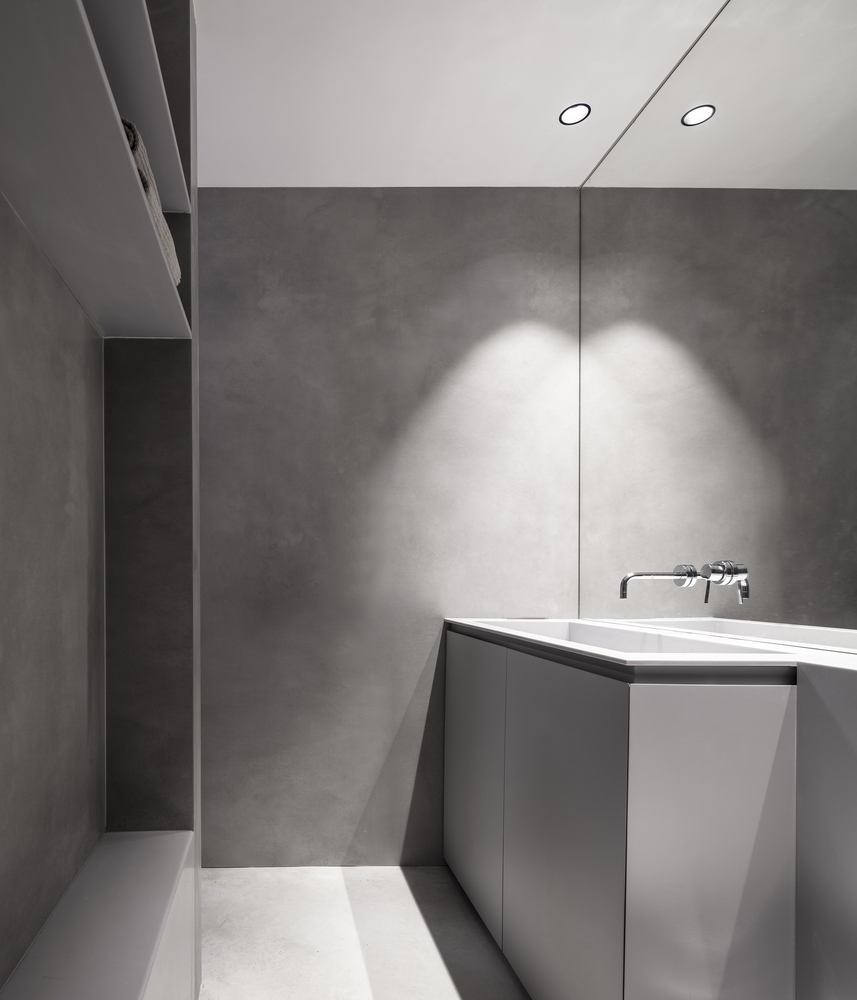Lakeside Retreat GLUCK+
2013-04-15 01:00
结构工程师RobertSilman Associates P.C.土木工程师Jarrett-Martin工程师Dente Engineering MEP Engineer IBC工程服务有限公司。照明Lux Populi发光前部公司。室内陈设福尔摩斯·纽曼和合伙人保罗·斯卡布罗音频/视觉HEDSouth
Structural Engineer Robert Silman Associates P.C. Civil Engineer Jarrett-Martin Engineers Geotechnical Engineer Dente Engineering MEP Engineer IBC Engineering Services, Inc. Lighting Lux Populi Glazing Front Inc. Interior Furnishings Holmes Newman and Partners Acoustical Paul Scarbrough Audio/Visual HEDSouth
受阿迪朗达克大营地传统的启发,这座现代的家庭静修所是一次逃亡之旅,坐落在纽约州北部一处树木茂密的湖畔地产中。就像这些早期的例子一样,住宅和娱乐项目被分布在一系列位于现场的建筑物中,以促进对景观的参与。
Inspired by the tradition of Adirondack Great Camps, this modern family retreat is an escape nestled into a heavily wooded lakefront property in Upstate New York. Like these early examples, the residential and recreational program is distributed among a series of buildings located across the site to promote engagement with the landscape.
大型项目所需的大部分设置在斜坡景观中,提供水平和梯田的发挥,减少建筑的存在,提高湖边场地的体验。这些“非建筑物”被掩埋在一起,将它们整合到景观中,每个内部层都向地面开放,以鼓励室内和室外生活之间的互动。全高度玻璃板滑回卧室成为睡觉的门廊,而沉陷的庭院则成为室外起居室。
The requisite bulk of a large program is set into the sloping landscape, providing a play of levels and terraces that diminish the built presence and enhance the experience of the lakeside site. These “non-buildings” are buried to integrate them into the landscape, with every interior level opening to the ground plane to encourage interaction between indoor and outdoor living. Full-height glass panels slide back in bedrooms to become sleeping porches, while sunken courtyards become outdoor living rooms.
在这两座主要建筑中,家庭住宅相对于游憩大楼而言,其入口和活动规定较少,后者的项目是为客人设计的聚会场所,从他们的“树林中的小木屋”来到。前者包括主套房、客人卧室、住宿和就餐、厨房和一个开放的艺术画廊。后者提供游泳池和水疗中心、健身房、蒸汽室、更衣室、厨房、开放的起居室和正式餐厅,使之成为一个屏蔽门廊。游客在他们自己的解释计划中穿行在重新配置的景观中。
The family house is the more private of these two main structures with entry and movement less prescribed through the building than the recreation building, whose program is designed as the gathering place for guests, arriving from their “cabins in the woods.” The former includes the master suite, guest bedrooms, living and dining, kitchen and an open art gallery. The latter houses lap pool and spa, gym, steam room, changing rooms, kitchens, open living spaces and a formal dining room that opens up to become a screened porch. Visitors navigate their own interpretative plan in and out and through the reconfigured landscape.
木屏风打破了面对湖面的玻璃立面的反射,以调节隐私,缩放外观,软化室内光线。从湖面上看,建筑物透过树木窥视,在木幕伪装下几乎看不见。新的可占领的绿色屋顶实际上创造了新的土地,扩大了自然遗址的使用范围。
Wood screens break up the reflections of the glass façades facing the Lake to modulate privacy, scale the façade and soften the interior light. From the Lake, the buildings peek through the trees, barely visible in their wood screen camouflage. The new occupiable green roofs in fact create new ground, expanding the use of the natural site.
“掩埋”建设项目在多个层面上工作:节能,轻轻地坐在景观上,在地面上裸露建筑的清晰和纯净与下面空间的神秘和怪异之间创造了一种建筑张力。不适宜居住和不适宜居住的建筑变成了新的运动场。户外就餐平台和休闲观更充分地体验到该特定地方的特殊地理特征。
“Burying” the built project works on multiple levels: it is energy efficient, it sits lightly on the landscape, and creates an architectural tension between the clarity and purity of the exposed construction above the ground plan and the mystery and eccentricity of the spaces below. What was inhospitable and uninhabitable becomes new playing fields, outdoor dining terraces and recreational lookouts to more fully experience the exceptional characteristics of the geography of that particular place.
 举报
举报
别默默的看了,快登录帮我评论一下吧!:)
注册
登录
更多评论
相关文章
-

描边风设计中,最容易犯的8种问题分析
2018年走过了四分之一,LOGO设计趋势也清晰了LOGO设计
-

描边风设计中,最容易犯的8种问题分析
2018年走过了四分之一,LOGO设计趋势也清晰了LOGO设计
-

描边风设计中,最容易犯的8种问题分析
2018年走过了四分之一,LOGO设计趋势也清晰了LOGO设计


































































